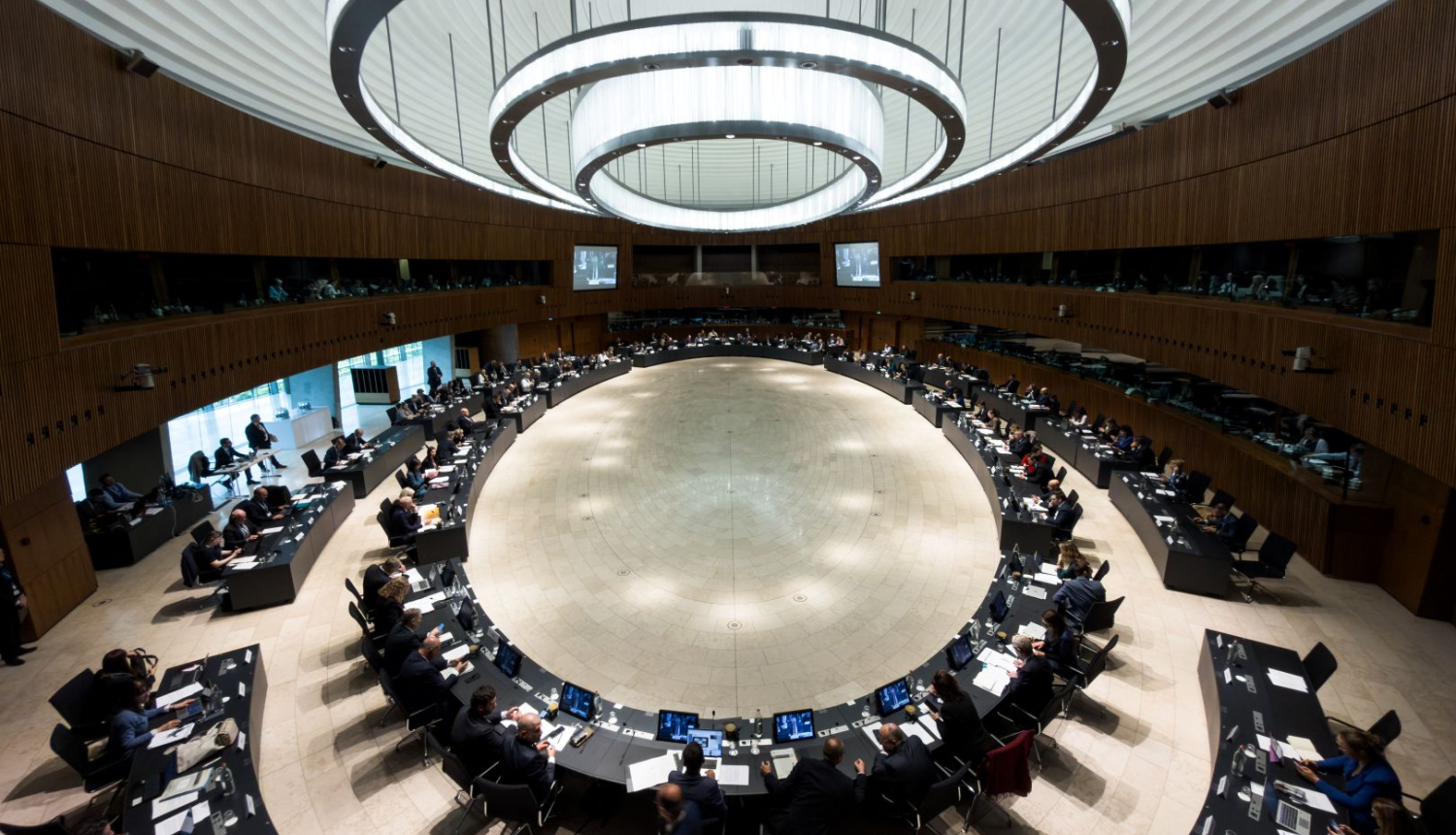On Monday and Tuesday, October 27th – 28th, Minister for Agriculture Armands Krauze took part in the European Union (EU) Agriculture and Fisheries Council (the Council) meeting in Luxembourg, where Member States adopted decisions on fishing quotas in the Baltic Sea for the coming year.
After intense discussions on Sunday evening and Monday (October 26–27) in Luxembourg — during the meeting of BALTFISH, the Baltic Sea regional fisheries cooperation platform, and subsequently at the Council session — a compromise was reached on the morning of October 28. This compromise essentially endorsed a joint agreement among Baltic Sea countries regarding fishing opportunities for 2026. The compromise significantly altered the European Commission’s (EC) initial proposal to restrict cod fishing and salmon recreational fishing (angling and personal consumption). These limits will now remain unchanged, reflecting actual by-catch volumes and no longer threatening the continuation of other fisheries along Latvia’s Baltic Sea coast.
In line with scientific recommendations, sprat fishing opportunities were increased by 45% and central Baltic herring by 15%, compared with the EC’s initial proposal to keep these quotas unchanged.
Minister for Agriculture Armands Krauze states: “The decisions we make directly affect our people — fishermen, fish processors, and coastal communities — and they must not be taken lightly or cause destructive consequences. We must take into account what scientists advise after carefully assessing fish resources. The fishing opportunities recommended by scientists should be used responsibly — not avoided for bureaucratic or political reasons. Meanwhile, the European Commission tends to treat any reductions as self-evident. Such an attitude is unacceptable to me, as it directly harms fishermen and undermines their trust in EU decision-making. We are not asking for more than is possible — only what science allows.
I am pleased that my colleagues from other Baltic coastal states shared similar positions, allowing us to achieve a reasonable outcome compared with the Commission’s initial proposal. Our decisions must not endanger the future of Baltic Sea fisheries or traditional coastal livelihoods — something the Commission’s radical cod by-catch reduction proposal would have done. The result achieved is an important success in defending our coastal fishing interests after difficult negotiations. Given that Russia continues to increase its fishing activity in the Baltic Sea — preventing the recovery of cod and other valuable fish stocks — accepting the Commission’s proposed reductions would have been a clearly harmful decision for EU fishermen. Therefore, I have repeatedly stressed the need for sanctions on Russian fish product trade with the European Union.”
Nearly all Baltic Sea countries expressed dissatisfaction with the EC’s proposal not to increase fishing opportunities for sprat and herring, despite scientific advice allowing it. While most countries were more cautious regarding herring quota increases, Latvia and others rejected the EC’s inconsistent approach — strictly following scientific advice only when it recommended reductions, but ignoring it when it supported increases.
Nonetheless, the Baltic Sea states accepted all scientifically justified quota reductions proposed for fish stocks in poor condition, agreeing that it is essential to prevent further deterioration of these species.
Currently, the herring stock in the Gulf of Riga is in the best condition in the entire Baltic Sea, but after several years of increased fishing opportunities, a 17% reduction will be necessary next year due to weaker spawning and lower recruitment in one season. It is hoped that the situation will improve in the coming years.
Scientists also recommend a further reduction of salmon fishing opportunities (including by-catch), as wild salmon populations in rivers flowing into the Baltic Sea remain in poor condition and are not recovering as desired.
It should be noted that cod and salmon have been restricted to by-catch only for many years. Unfortunately, despite the end of targeted fishing for these species, their stocks have not recovered, which clearly points to other non-fishing-related factors — including a rapid increase in predatory species such as grey seals and great cormorants, which continue to negatively affect already limited valuable fish populations.
As a result of the decision, Latvia’s fishing opportunities in the Baltic Sea and Gulf of Riga for 2026 (compared to 2025) will be as follows:
- Cod, subareas 22–24 (10 tonnes, by-catch only) – unchanged from the previous year (compared to the EC’s original proposal for an 80% reduction);
- Cod, subareas 25–32 (37 tonnes, by-catch only) – unchanged from the previous year (compared to the EC’s original proposal for a 62% reduction);
- Herring in the Baltic Sea (2,674 tonnes) – 15% increase (compared to the EC’s proposal to keep it unchanged);
- Herring in the Gulf of Riga (18,497 tonnes) – 17% reduction;
- Sprat in the Baltic Sea (27,942 tonnes) – 45% increase (compared to the EC’s proposal to keep it unchanged);
- Salmon in the Baltic Sea (3,359 individuals, by-catch only) – 27% reduction.
(*) The figures are provisional; official data will be available following publication of the regulation.



